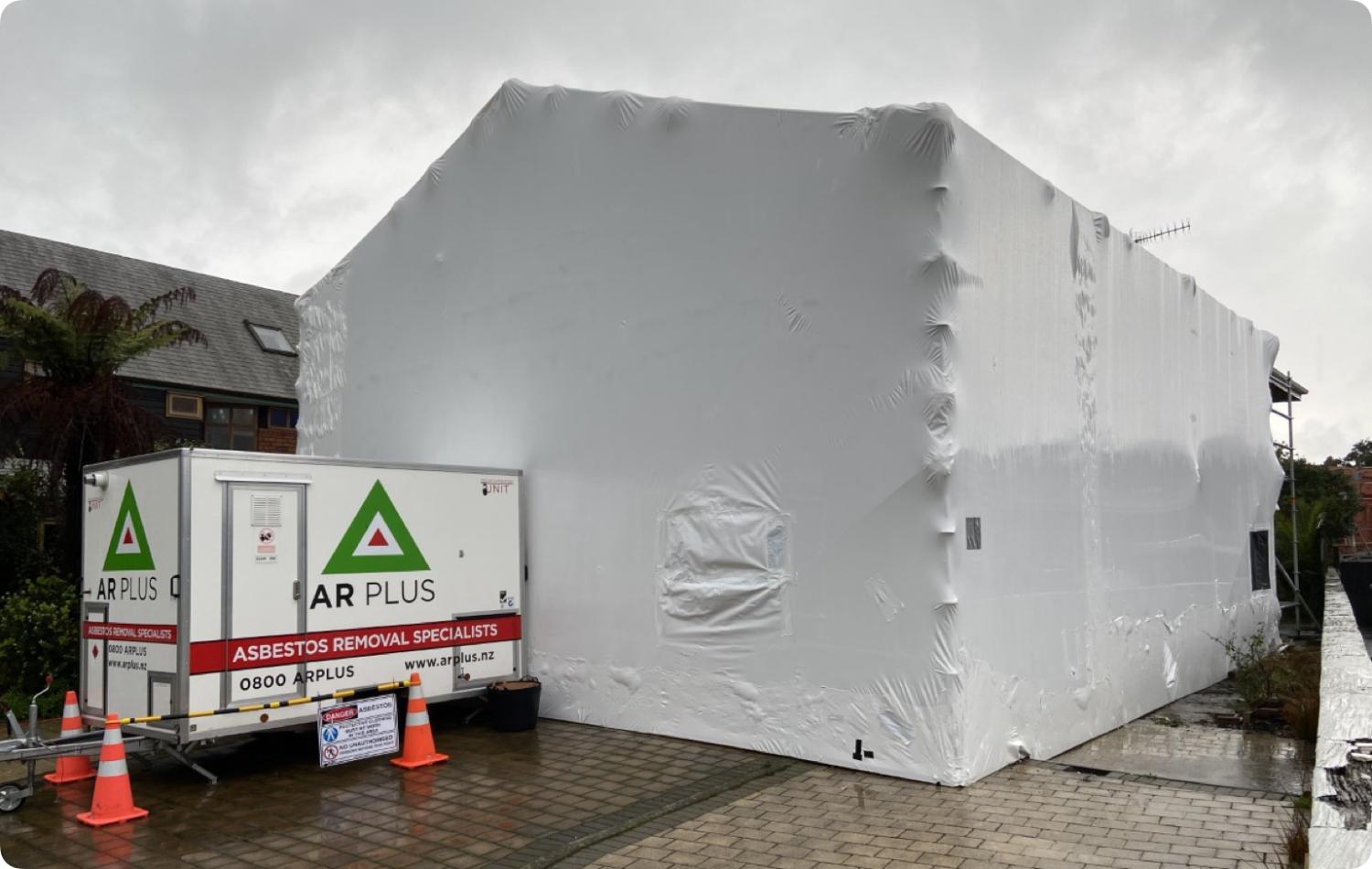Frequently Asked Questions About Asbestos Removal: A Guide by AR Plus
Due to its fire-resistant and insulating properties, Asbestos, a naturally occurring mineral fibre, was the preferred choice in construction materials and other industrial applications.
Over time, exposure to these asbestos fibres leads to serious health problems that include lung cancer and mesothelioma, becoming a severe cause of concern, and a hard look into Asbestos uses and implementations would need to be investigated.
Today, asbestos removal is essential for ensuring the safety and well-being of homeowners and the occupants of buildings that contain this hazardous material.
The team at AR Plus understand the concerns and uncertainties around asbestos removal. We’ve compiled a comprehensive guide to common, most frequently asked questions to address your questions and encourage you to make informed decisions.
1. What Are the Signs of Asbestos in My Home?
From the 1950s to the early 1980s, buildings were commonplace for asbestos.
This included…
- Textured ceilings: Popcorn ceilings, with swirly and stipple finishes, often contained asbestos.
- Insulation: Insulation around hot water cylinders and pipes was commonplace for asbestos. Pre-1980s insulation materials and lagging often contained asbestos fibres.
- Vinyl flooring adhesive and floor tiles: Vinyl flooring and adhesives may also contain asbestos fibres.
- Roofing materials: Certain types of roof shingles and corrugated roofing sheets were commonplace for asbestos.
- Decramastic roofing tiles: Decramastic roofing tiles, commonly used in New Zealand, were sometimes manufactured with asbestos prior to the early 1980s. If you are unsure about the presence of asbestos in your Decramastic tiles, it’s always best to have them tested by a professional before disturbing them.
2. How Do I Know for Sure if I Have Asbestos?
It’s crucial to note that a visual inspection alone cannot confirm if the building or materials contain traces of asbestos. The most definitive approach to identifying asbestos is through professional testing. AR Plus provides assessments whereby a certified specialist will collect samples for laboratory analysis.
3. What Happens if I Suspect Asbestos in My Home?
If you suspect you may have asbestos in your home or building, do not attempt to remove it yourself. When disturbed, asbestos-containing materials can release harmful fibres into the air, posing a severe health risk. Instead, contact a licensed and certified asbestos removal company like AR Plus. We will ensure the safe removal of the asbestos, from managing the testing, assessment, removal, and disposal thereof, and adhere to strict regulations to give you peace of mind and keep you safe!
4. Is it Safe to Drill Holes into Asbestos Containing Materials?
Even with the right equipment, drilling holes into asbestos-containing materials (ACMs) like ceilings or cladding can release harmful asbestos fibres into the air. This can happen during projects like installing DVS systems, which can also leave static stains on the ceiling, making it difficult to clean safely. Retrofitting HVAC units in older buildings with asbestos cladding can also be risky. Hiring professionals with the right equipment and expertise to handle ACMs is always safest. They can assess the situation, develop a plan to minimise risk and ensure proper clean-up after the work is complete.
5. What is the Asbestos Removal Process Like?
The specific steps in asbestos removal can vary, depending on the location, type, and extent of the asbestos-containing material.
To give you a general overview of what to expect, the process can include…
- Pre-removal procedures: We will contain the work area, install negative pressure systems to stop the spread of any fibres, and wear the correct PPE.
- Asbestos removal: Our team uses specialised equipment and techniques that will carefully remove asbestos-containing material.
- Air monitoring: We will monitor the air quality throughout the process to ensure that asbestos fibre levels remain low and within safety limits.
- Cleaning: When the asbestos has been safely removed, we will thoroughly clean the work area and conduct clearance testing to confirm that no harmful fibres remain.
- Disposal: We safely transport and dispose of the removed materials following strict regulations.
6. How Long does the Asbestos Removal Process Take?
The removal process’s duration can vary and depends on several factors, including the amount and type of asbestos, the ability to access the asbestos-containing materials, and the size of the work area.
7. What Are the Potential Health Risks of Asbestos Exposure?
Inhaling asbestos fibres can cause severe health problems, including…
- Asbestosis: A chronic lung disease that can lead to shortness of breath, coughing, and difficulty breathing.
- Lung cancer: The most common form of cancer linked to asbestos exposure.
- Mesothelioma: A rare and aggressive form of cancer that affects the lining of the lungs, chest, or abdomen.
8. Is Asbestos Removal Expensive?
The cost can vary and is dependent on the factors mentioned above. However, when you consider the potential health risks and legal implications of removing asbestos improperly, it’s an investment in your overall well-being, the health of your loved ones, or those who share the occupied space. At AR Plus, we offer competitive pricing; speak to us about payment options to ensure you have access to the asbestos removal services you need.
9. What Are Some Things I Can Do to Prepare for Asbestos Removal?
Here are some helpful steps to take before the removal process starts…
- Remove personal belongings and valuables from the work area.
- Cover furniture and belongings in the surrounding rooms with dust sheets.
- Turn off air conditioning and heating systems in the affected area.
- Plan for alternative accommodation, if necessary, especially for vulnerable family members like pregnant women, young children, elderly, and individuals with respiratory issues.
10. What Can I Do to Ensure I Choose a Qualified Asbestos Removal Company?
We cannot stress the importance of choosing a licensed, certified, and experienced company for asbestos removal.
Look for the following…
- Certification: Check that the company is certified by a reputable organisation like WorkSafe. At AR Plus, we are fully Class A and B asbestos removal certified. (Keen to know more? View our licenses).
- Experience: Partner with a company with a proven track record and a team of experienced, qualified professionals.
- Insurance: Confirm that the company has adequate liability and workers’ compensation insurance.
- Communication: Pick a company that clearly explains the process, costs, and safety measures involved.
11. What Happens After the Asbestos Removal is Complete?
You can safely return to the area once the removal and clearance testing are complete.
Worried About Asbestos in Your Home or Business?
Early detection and safe removal are vital for safeguarding your health and well-being.
Contact AR Plus today. Our certified professionals can answer your questions, evaluate the situation, and provide a quote.
With AR Plus, you can…
- Gain peace of mind knowing you’re working with a licensed asbestos removal company.
- Benefit from our expertise and commitment to safety.
- Receive a competitive quote and explore payment options.
Call AR Plus on 0800 277 587 or complete an online contact form to schedule your assessment.
Breathe easy knowing your home or workspace is free from asbestos dangers!
Class A Certified Asbestos Removal
(AS/NZS 4801:2001 Health and Safety System)
(ISO 45001:2018 Health and Safety System)






